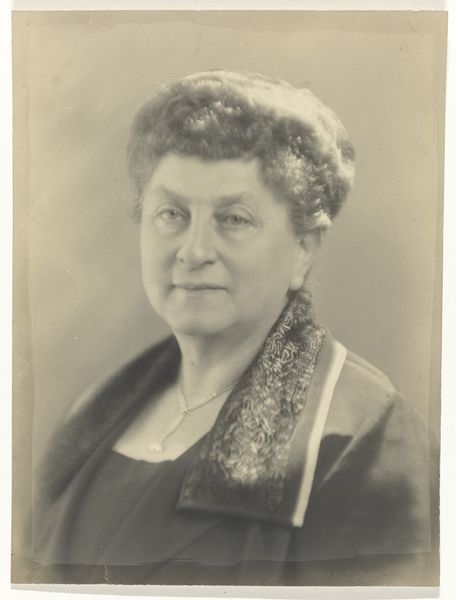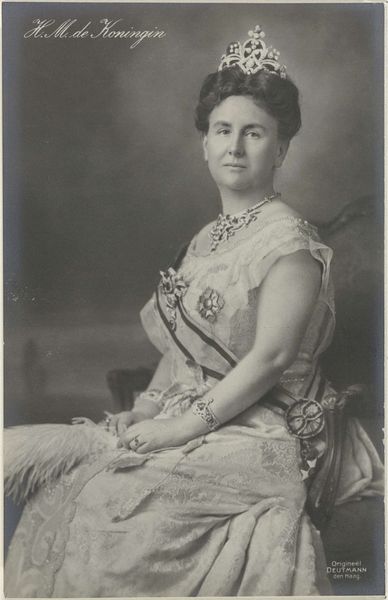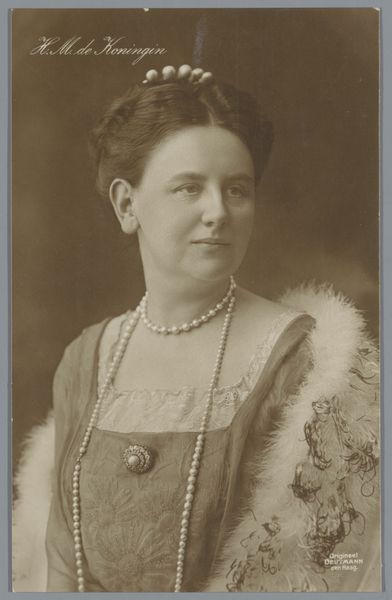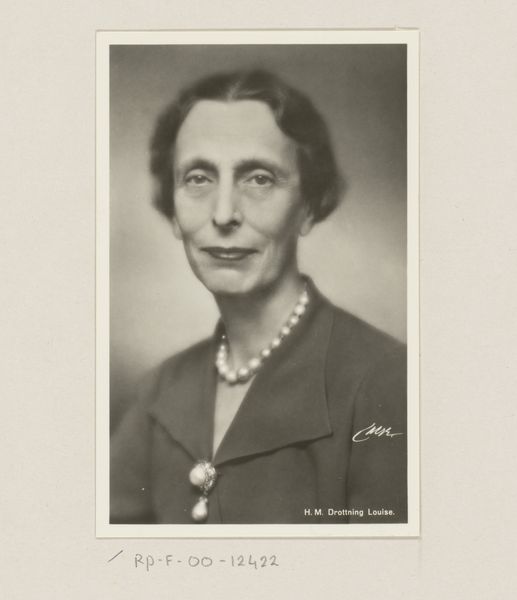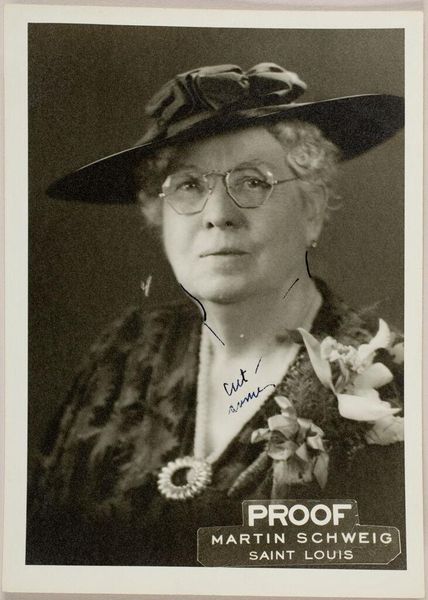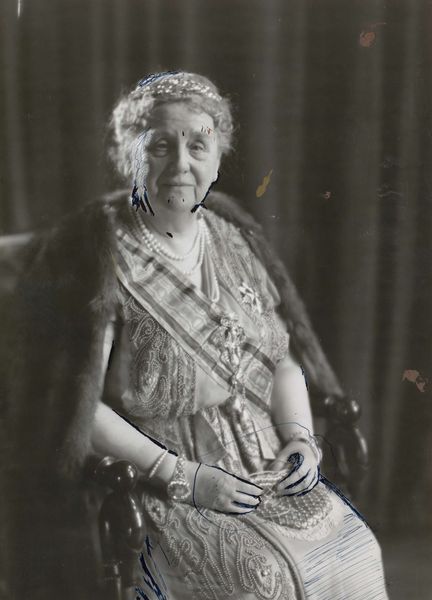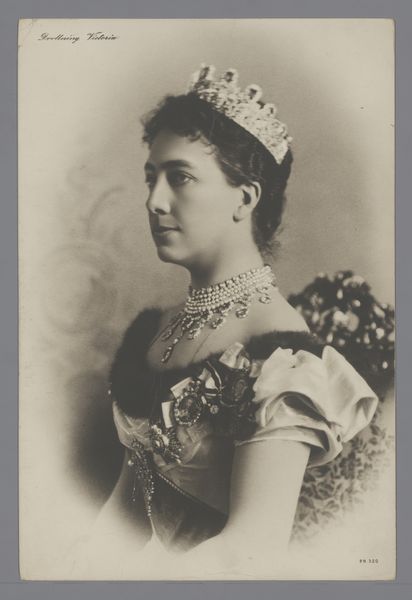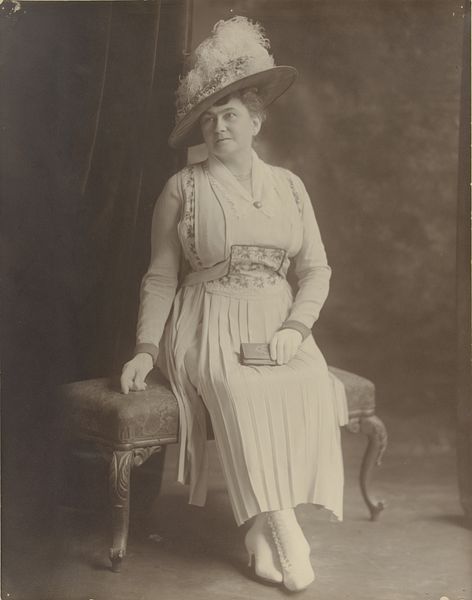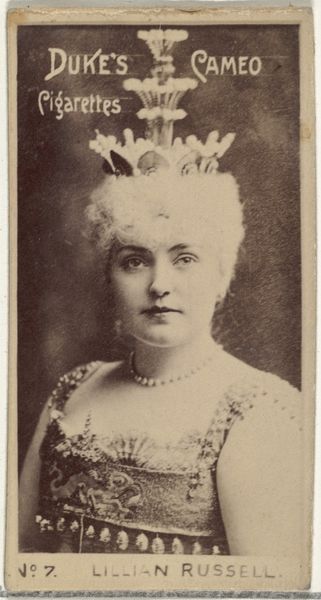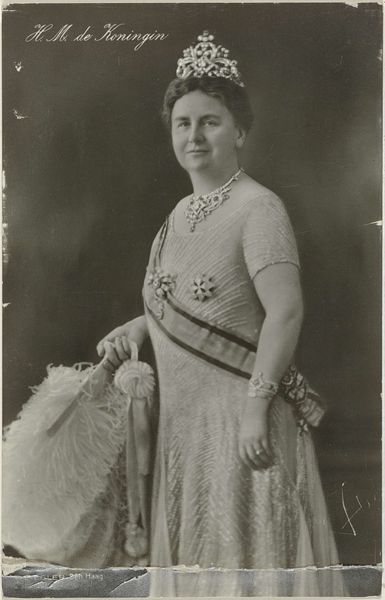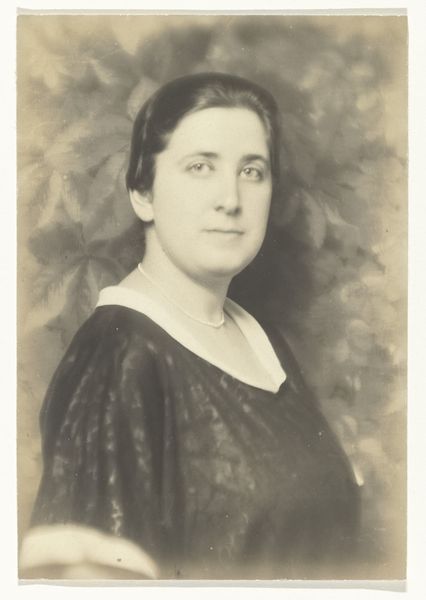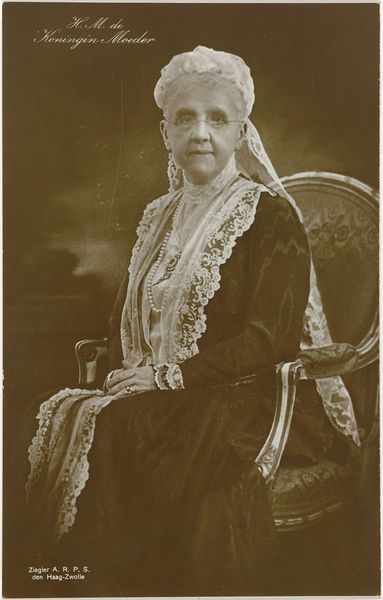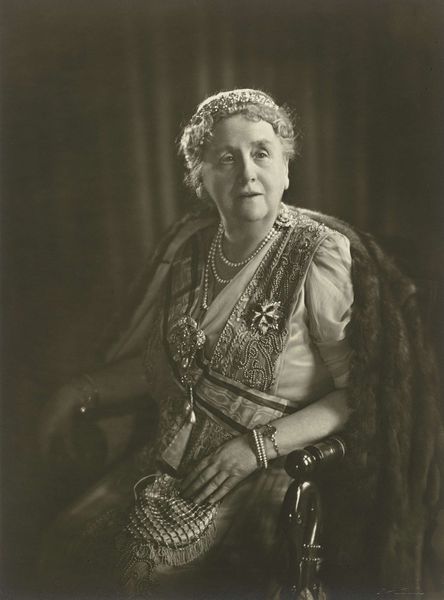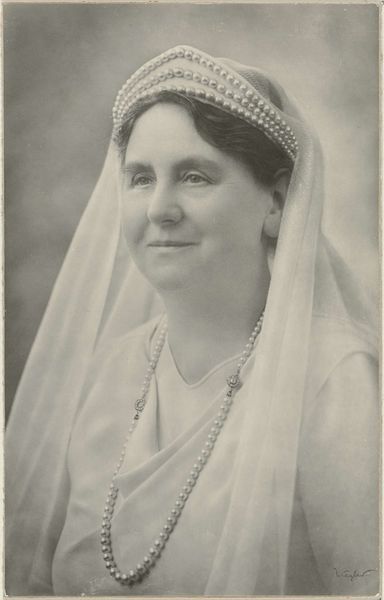
photography, gelatin-silver-print
#
portrait
#
photography
#
gelatin-silver-print
#
modernism
#
realism
Dimensions: height 139 mm, width 89 mm
Copyright: Rijks Museum: Open Domain
Curator: This photograph, simply titled "H.M. koningin Wilhelmina herdenkingsjaar 1948," a gelatin silver print from 1948, offers a rather formal, intimate portrait. Editor: The grayscale and slightly grainy texture create such a somber yet regal feel. It feels like a quiet acknowledgement, perhaps tinged with melancholy. Curator: The year 1948 is key. After a long reign and the trauma of World War II, Queen Wilhelmina abdicated, handing the throne to her daughter, Juliana. This image became a commemorative object, imbued with cultural meaning tied to leadership and national identity at a pivotal transition. Editor: The tiara, the necklace, the ornate lace sleeves... each object laden with symbolism, a uniform of power passed down through generations. It’s interesting how portraiture, particularly of women in positions of authority, uses such heavily gendered signifiers. Curator: The jewelry and regalia served as visual anchors, reinforcing the monarchy's historical weight. But beyond simple show, these symbols resonated deeply within the cultural memory, conjuring specific moments and qualities associated with Wilhelmina's rule— resilience during the war, commitment to duty. There is some clear modernist sensibility, mixed in this realism, here. Editor: How does the photograph complicate, or perhaps affirm, gender roles in mid-20th century Netherlands? We have a powerful monarch stepping down, ostensibly a moment of progress for women but framed through such rigid, almost archaic symbols of femininity and status. Are these tools that legitimize power, or do they actively confine women within predefined social scripts? Curator: These are important tensions. On one hand, this portrait invokes conventional notions of queenly appearance, which solidify ideas of hierarchy and proper order. But we might ask if Wilhelmina actively weaponized the symbols, if she strategically enacted these visible markers to inspire steadfast confidence among her citizens when it mattered most. Editor: Perhaps these performative elements become complicated gestures, and that’s how their meaning accrues power over time, in ways that can be progressive but also contain a darker, perhaps more oppressive side too. Curator: Precisely. Photographs like these don't just illustrate history, they become potent visual icons, actively shaping our ongoing understanding. Editor: Ultimately, I'm left wondering what Wilhelmina herself thought of it, having to see herself so heavily ornamented. It makes me reflect on what remains of that type of traditional leadership now.
Comments
No comments
Be the first to comment and join the conversation on the ultimate creative platform.
